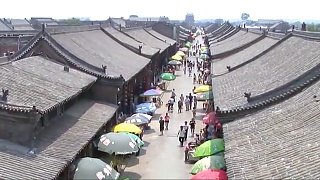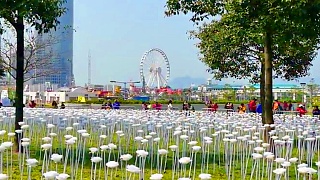
|
With Tucker Eats ...
Welcome to Shangri-La, China
Introduction
History of Shangri-La
Joseph Rock & His Influence
Top Attractions
Local Culture
Local Cuisine
Visitor Tips
Introduction
Shangri-La, located in the DiQing Tibetan Autonomous Prefecture in Yunnan Province, China, is a place of stunning natural beauty, rich Tibetan culture, and spiritual significance. Known for its snow-capped mountains, deep valleys, and pristine lakes, Shangri-La has become a popular destination for travelers seeking both adventure and tranquility.
History of the Name "Shangri-La"
The name "Shangri-La" originates from James Hilton's 1933 novel Lost Horizon, where it was depicted as a mystical, utopian valley in the Himalayas. The term has since become synonymous with an earthly paradise, a place of peace and perpetual happiness. In 2001, to promote tourism, the Chinese government officially renamed ZhongDian County in Yunnan Province to Shangri-La, claiming it to be the inspiration for Hilton's fictional paradise.
Despite the debate over the true inspiration for Hilton’s novel, the renaming has significantly boosted the region's profile, transforming it into a major tourist destination. The area was already known for its Tibetan cultural heritage, and the new name further solidified its reputation as a place of mystical allure and natural beauty.
Joseph Rock & His Influence on Shangri-La
Joseph Francis Charles Rock was an Austrian-American explorer, botanist, and anthropologist who lived in China for more than 25 years during the early 20th century. He is particularly known for his extensive travels and research in the remote regions of Yunnan and Sichuan provinces, where he lived among the Naxi people, an ethnic minority with a rich cultural heritage.
Rock’s detailed accounts of the Naxi culture, their language, and the stunning landscapes of the region were published in various journals, including National Geographic. These writings brought the hidden beauty of the region to the attention of the world and likely served as an inspiration for James Hilton's depiction of the fictional Shangri-La in his novel Lost Horizon.
Rock's base in Lijiang, which is not far from the present-day Shangri-La, became the center of his studies on the Naxi people. He documented their ancient Dongba script, rituals, and way of life, contributing significantly to the preservation of their culture. The influence of his work is evident in the detailed descriptions of a harmonious, isolated valley in Hilton’s novel, which bears striking similarities to the areas where Rock lived and worked.
Today, Joseph Rock’s legacy lives on in both the scientific community and the popular imagination, where he is remembered as a key figure who bridged the gap between the mysterious landscapes of southwest China and the Western world.
Top Attractions in Shangri-La
Songzanlin Monastery
Often referred to as the "Little Potala Palace," Songzanlin Monastery is the largest Tibetan Buddhist monastery in Yunnan Province. Built in the 17th century, it is a stunning complex of golden roofs, ornate halls, and traditional Tibetan architecture. The monastery is an active religious site, home to hundreds of monks, and offers breathtaking views of the surrounding landscape.
Pudacuo National Park
Pudacuo National Park is one of the first national parks in China to meet international standards. Spanning over 1,300 square kilometers, the park is known for its diverse ecosystems, including alpine lakes, wetlands, forests, and meadows. Key attractions within the park include Shudu Lake, Bita Lake, and the vast, undisturbed wilderness that is home to a variety of rare flora and fauna.
Tiger Leaping Gorge
Tiger Leaping Gorge, one of the deepest and most spectacular gorges in the world, is located about 60 kilometers from Shangri-La. The gorge is carved by the Jinsha River, a tributary of the Yangtze, and offers thrilling trekking opportunities. The dramatic scenery of steep cliffs, roaring rapids, and snow-capped peaks makes it a must-visit for adventure seekers.
Napa Lake
Napa Lake is a seasonal lake located about 8 kilometers from Shangri-La. Surrounded by mountains, the lake appears during the rainy season and turns into a lush grassland in the dry season, where you can witness yaks and horses grazing. The area is also a sanctuary for migratory birds, including the rare black-necked crane.
Dukezong Ancient Town
Dukezong Ancient Town is a well-preserved Tibetan town with a history of over 1,300 years. The town features traditional Tibetan architecture, winding cobblestone streets, and the largest prayer wheel in the world. Dukezong is a great place to explore local culture, enjoy Tibetan cuisine, and shop for traditional crafts.
Local Culture
Shangri-La is a region deeply rooted in Tibetan culture. The local population predominantly consists of Tibetan people, who practice Tibetan Buddhism and maintain traditional customs and festivals. Major festivals include the Tibetan New Year (Losar), the Horse Racing Festival, and the Gedong Festival, where you can experience colorful religious dances, horse racing, and other cultural events.
The region is also known for its vibrant Tibetan art, including Thangka paintings, wood carvings, and intricate metalwork. Visitors have the opportunity to engage with local artisans and learn about the traditional techniques passed down through generations.
Local Cuisine
The cuisine in Shangri-La is heavily influenced by Tibetan and Yunnanese flavors. Key dishes to try include:
Tibetan Yak Butter Tea: A traditional Tibetan beverage made from tea, yak butter, and salt. It’s known for its unique taste and high energy content.
Tsampa: A staple food made from roasted barley flour, often mixed with yak butter tea to form a dough.
Yak Meat: A common ingredient in local dishes, yak meat is often stewed or grilled, and served with vegetables or rice.
Momos: Tibetan-style dumplings filled with meat or vegetables, similar to the Chinese jiaozi.
Wild Mushroom Hot Pot: A Yunnan specialty featuring a variety of locally-sourced wild mushrooms cooked in a flavorful broth.
Visitors should also explore local markets for fresh produce, Tibetan bread, and artisanal cheeses made from yak milk.
Visitor Tips
Best Time to Visit: The best time to visit Shangri-La is from May to October, when the weather is mild and the landscapes are lush and green. During this period, the region is also alive with festivals and cultural events.
Altitude: Shangri-La is located at an altitude of about 3,200 meters (10,500 feet). Visitors should be aware of the potential for altitude sickness and take it easy during the first few days of their visit.
Getting There: Shangri-La can be reached by air via DiQing Shangri-La Airport, which has flights from major cities like Kunming, Chengdu, and Lhasa. There are also bus connections to Lijiang and Dali.
Language: While Mandarin is widely spoken, many locals speak Tibetan. Having a translation app or a basic knowledge of Mandarin phrases can be helpful.
Respect Local Customs: When visiting monasteries and other religious sites, dress modestly, remove your hat, and ask for permission before taking photographs. It’s also customary to walk clockwise around religious sites.
|





![[videogallery id=UCSq937jnGuQAcl_yJf2gu6A] Creativity, Chinese language practice, and chaos, with Issa 伊薩 …](https://www.beijingbuzzz.com/choral3.jpg)
 China and the space race
China and the space race










![[videogallery type=playlist id=PLAhTBeRe8IhNCSe4R-NvrFnrgJvE6jql8] Something different - on the universe / space](https://img.youtube.com/vi/W62aVty77Lw/mqdefault.jpg)




